
All categories
Featured selections
Trade Assurance
Buyer Central
Help Center
Get the app
Become a supplier

(2001 products available)




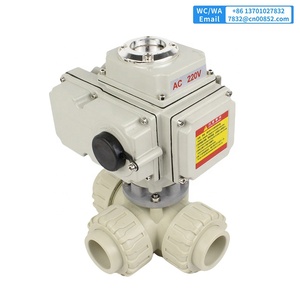
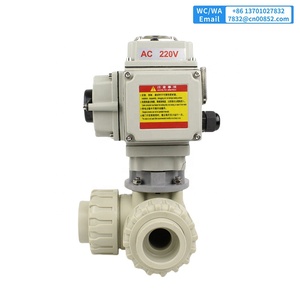
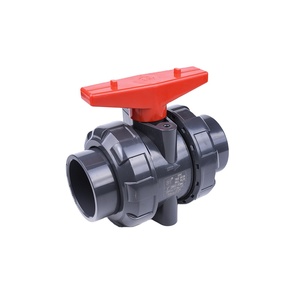



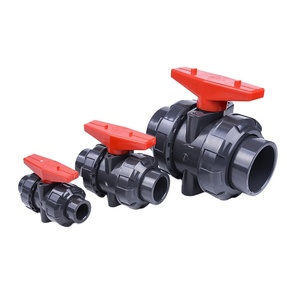


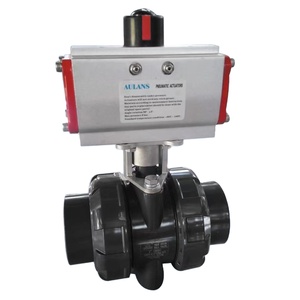




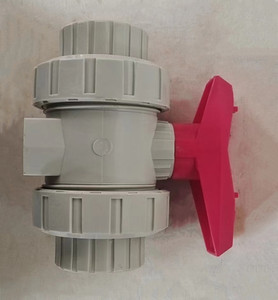















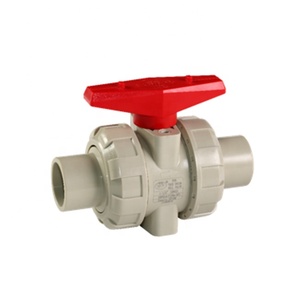







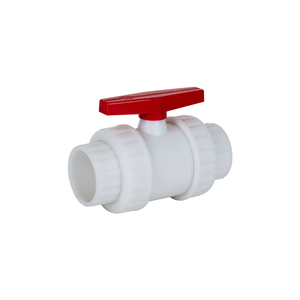


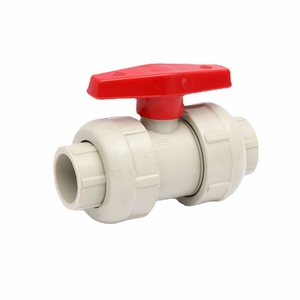
PPH ball valves are made with different traits to suit various uses. The following are some widely used types:
Manual PPH ball valves needed adjustments by hand. They have a lever or handle that is turned to open or close the valve.
Pneumatic PPH ball valves use air pressure for operation. They move automatically when air is sent through a chamber. This makes them useful in many industries where they needed quick and uniform control of fluids.
Electric ball valves used motors for opening and closing. These valves are controlled by electrical signals, making precise fluid control possible. They worked well in places with automated systems, such as chemical processing and power plants.
Hydraulic ball valves control fluid flow under high pressure using hydraulic fluids. They had strong seals and robust designs. These valves were important in construction, aerospace, and any work where heavy machinery used high-pressure fluids.
Two-piece ball valves were made of two valve body sections. This design made maintenance easier since the valve could be taken apart without removing the pipes.
Three-piece ball valves contained three body sections. This design increased durability and allowed more flexibility in installation. The additional middle section was removed for easy valve servicing without cutting pipes.
Floating ball valves had the ball sitting between the two valve seats. The pressure from the fluid allowed the ball to "float" and press against the seat on the flow side. This design helped provide a better seal as the fluid pressure increased.
It had a different construction than other PPH plastic valves. A trunnion ball valve had a ball valve bonded onto the body trunnions. The ball valve had two metallic shafts sunk into the valve body and fixed onto the valve rotating element.
The features of PPH ball valves are:
Corrosion resistance
PPH ball valves were highly resistant to corrosion. This made them good for use with harsh chemicals and acidic fluids in the chemical processing and wastewater treatment industries. PPH material was more durable and longer-lasting in such conditions than metallic valves.
Lightweight construction
PPH material used in these ball valves was lighter than metal alloys. It made installation and handling easier, especially in places where weight was an important factor, like on overhead piping systems.
Tamper-proof valve design
The tamper-proof valve design was made to seal critical processes. This important feature was widely used in pharmaceutical and food processing industries. Some PPH ball valves had lockable levers or were designed to prevent unauthorized adjustment.
Full port design
Many PPH ball valves had a full port design. This feature allowed unrestricted flow through the valve, reducing pressure drop and improving system efficiency. Full port valves were especially useful in applications where the fluid contained solids that could clog narrower valves.
The design of PPH ball valves is:
Compact design
PPH ball valves were more compact than most metal ball valves. Their smaller size made them more practical to use in tight piping spaces. The lightweight PPH material allowed valves to fit into the same flow control spaces without increasing system pressures.
Cavity filled ball valve design
Some PPH ball valves had a unique feature. They contained a cavity-filled ball. This design securely filled any gaps between the ball and valve body with plastic material. It lessened the chance of trapped fluids causing dangerous leaks or reactions.
Active seat ring design
The active seat ring designs in some PPH ball valves automatically adjusted the seats to maintain a tight seal as valves wore down over time. It ensured a reliable seal in vital applications where leaks could create serious problems.
The layouts of PPH ball valves are:
Top entry ball valves layout
The top-entry layout of PPH ball valves allowed access to the internal components from above the valve body. It eliminated the need to cut pipes during repairs. This layout was particularly useful in large industrial systems, reducing downtime and making maintenance easier.
Split body ball valves layout
Split body PPH ball valves had bodies divided into two halves that could be easily put together around the pipe. This layout made installation simpler and allowed for more flexible options, making it useful in varied applications.
Wafer style ball valves
Wafer-style PPH ball valves had a unique body shape that allowed them to fit between two flanges in a piping system. This compact layout eliminated the need for extra flange connections, making installation quicker and more cost-effective. It was especially useful in bulk liquid handling systems.
When choosing PPH ball valves, consider these key factors:
Identify how the valve will be used. Determine the Operating temperature ranges, fluid types, and pressure levels. This information ensured the valve could handle specific conditions without degrading.
Valve size depended on pipe diameters. It ensured that flow wasn't restricted or too turbulent. The right-sized valve allowed proper control of fluid movement through the system.
Make sure the PPH material was compatible with the fluids being transported. It prevented chemical reactions that weakened the valve. PPH offered superior resistance to acids, bases, and other harsh chemicals.
Opt for high-quality PPH valves from reputable manufacturers. Standards ensured reliability, durability, and safety conformance. Trusted brands conducted rigorous testing and inspection to guarantee performance in demanding environments.
Assess the costs of the valve versus potential savings on maintenance and replacement. The initial price might be higher, but longer-lasting quality prevented frequent repairs.
Consider the upkeep requirements. Valves with fewer movable parts needed less frequent servicing. Easy accesses for maintenance, like top-entry designs, saved time and labor.
Look for industry certifications such as ISO or FDA approval. These credentials verified that the valve met essential safety, environmental, and operating standards for specific industries, like pharmaceuticals.
Poor maintenance caused PPH valves to fail, so proper maintenance was needed. The maintenance and repair methods of PPH ball valves are as follows:
Conducted frequent hose joint inspections for visible damage, leakage, or abnormal wear. Check seals and gaskets for signs of corrosion. Inspect the ball for staining, which indicates chemical attack or deposit buildup.
Performed regular corroded joint cleaning using mild soap and brush. Avoid abrasive materials that scratched PPH plastic. For stubborn deposits, diluted acids could be used, but always test on a small area first.
Followed the manufacturer's recommendations for lubricating valve seats and balls with compatible smooth lubricant. It reduced friction during valve operation while protecting plastic from premature degeneration.
Gasket and O-ring seal replacements were performed at recommended intervals. Worn seals decreased allowed leakage and safety hazards. Replace with OEM parts to ensure continued valve integrity.
Avoided exposing the valve to temperatures beyond the manufacturer's specified range. Excess heat weakened plastic over time. Installing insulation on high-temperature pipes protected the valve assembly.
Prevented unauthorized adjustments by locking handles where applicable. Tampering with the valve in any form disrupted desired settings. Installing a lockable cover around the valve improved security further.
Conducted frequent pressure testing of closed valves using nitrogen, not oxygen. This method identified internal leaks not visible externally. Early detection allowed for timely repairs before system failure.
In cases where wear was suspected to impact safety or operations, assessment by a certified valve technician was sought. Their expertise determined whether repairs could suffice or a complete valve replacement was warranted.
A1. PPH ball valves handled various fluids, including aggressive chemicals, acids, and alkaline solutions in chemical processing. Their exceptional resistance to corrosion allowed them to endure these harsh environments without degrading. This property made them the best choice for transferring fluids that quickly damaged metallic valves.
A2. The maximum pressure PPH ball valve withstood varied depending on its size and temperature surroundings. Generally, they could handle pressures up to 10 bar. Larger valves accommodated higher pressures, while high temperatures needed careful consideration to avoid plastic deformity.
A3. A simple way to test a PPH ball valve was to operate it through its full range. If it moved smoothly without resistance or unusual noise, the valve was working well. Observing for leaks at the seams or connections provided further assurance of a properly sealed and functional valve.
A4. PPH ball valves did not rust like metal valves. They could endure corrosive fluids better than metallic valves. However, continuous exposure to extremely high temperatures could weaken the valve material over time. Proper selection of temperature and chemical compatibility ensured the valve lasted long without corrosion.
A5. PPH ball valves lasted between 10-15 years if maintained under recommended conditions. Regular inspections, cleaning, and adherence to pressure limits enhanced durability. The absence of abrasive materials and pollutants in the fluid system lengthened lifespan further.